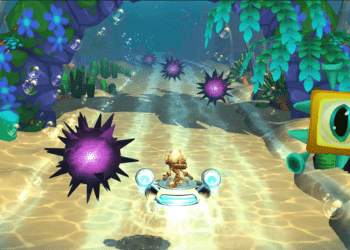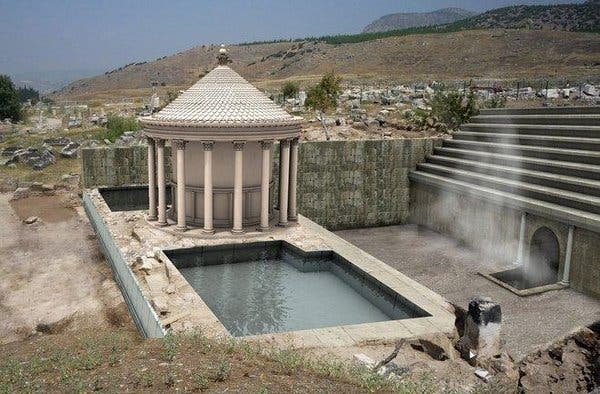
The 2020 videogame Hades is widely considered among the best roguelike games in history, and even one of the best computer games ever made. Now, the game is getting a sequel, and the main character will leave many players scratching their heads. Who is Melinoë, one of the more obscure figures in Greek Mythology?
Melinoë in Hades II
Hades II has come out in early access, and like its predecessor, it’s focused on Greek myths — with some approximations.
The Greek pantheon is one of the most captivating mythologies, fascinating historians and the general public alike for over two thousand years. At the core of this pantheon are the twelve Olympians, headed by Zeus, the king of the gods. Zeus, along with his two brothers Hades and Poseidon, overthrew his father, the titan Cronus and ushered in the age of the gods.
The three brothers drew lots, and Hades got the short stick. He was therefore sent to rule over the underworld, while Poseidon ruled over the waters, and Zeus ruled over… well, everything else, really.
Hades himself is not the bad guy most Hollywood stories make him out to be. In fact, as far as Greek gods go, he’s pretty tame. Sure, he kidnaps Persephone, the daughter of Demeter (the goddess of agriculture) but overall, Hades is regarded as a pretty just and neutral figure in mythology. He’s definitely not the demonic, evil figure that’s been recently popularized in many movies.
In Hades the computer game, the main (playable) character is Zagreus, who in the game is Hades’ son. Zagreus is a poorly understood figure, sometimes thought to be the god of wine (Dionysus), Hades’ son, or Hades himself. The Ancient Greeks themselves don’t seem to agree on who Zagreus was. But in the sequel, Hades II players take on Melinoë — and Melinoë is not that well understood, either.

Daughter of … Zeus?
In the game, Melinoë is the daughter of Hades, sister of Zagreus. But like Zagreus, Melinoë isn’t a clear figure. In some interpretations, she is the daughter of Hades. But, in others, she’s the daughter of Zeus, with Hades’ wife Persephone.
If that sounds messed up, you’re probably not that familiar with Greek Mythology. Half of Greek Mythology revolves around Zeus trying to seduce or force himself on… everyone, really.
Zeus transformed himself into a swan to seduce Leda, the Spartan queen, leading to the birth of Helen of Troy and Polydeuces. Another famous instance is when he took the form of golden rain to impregnate Danaë, resulting in the birth of the hero Perseus. And, according to some interpretations, he turns into Hades himself to sleep with Hades’ wife. In other writings, Zeus turns into a snake and rapes Persephone. Yep, Zeus does way more sketchy things than Hades.
At any rate, ancient writings seem to suggest that Melinoë was the daughter of Zeus rather than the daughter of Hades.
Even so, she spends her time in the underworld doing underworld things.
The goddess of ghosts
Melinoë is born at the mouth of Cocytus, one of the four rivers of the underworld. She is typically regarded as a princess or a queen of the underworld. She’s represented as a pale, ghostly figure, “clad in saffron” with the power to talk to ghosts and invoke them. In fact, she is sometimes regarded as a goddess of ghosts.
Melinoë is not an ancient figure, seeming to appear relatively late in Greek myth. Some historians don’t even believe she was an individual character, but rather an interpretation of Hecate, the goddess of magic, witchcraft, ghosts and necromancy. But the writings that do mention Melinoë place her as a bringer of nightmares and madness. She could bring terrors to humans and cause them to experience disturbing visions or dreams.
However, she was also a guardian of the spirits of the underworld; she guided them and ensured a fair passage. Melinoë also linked different realms together and was sometimes asked to communicate with ghosts and other types of spirits.
Ancient Greeks apparently prayed to her for protection. Researchers have uncovered a bronze tablet used for a “magic” ritual in the 3rd century AD. The tablet was triangular with a hole in the center, possibly for suspending it over some specialized board and divining… something.
Otherwise, however, there isn’t that much writing or historical evidence left mentioning Melinoë.

Hades II doesn’t aim to be a historical representation
Ultimately, Hades II falls into the same category as many other games or movies/series: using a vague approximation of gods and mythical figures. Melinoë was associated with Hades and the underworld, but we don’t know for sure if she was Hades’ daughter, or even if she was indeed a unique goddess.
When she is mentioned, Melinoë is the goddess of ghosts and nightmares. She roams the land with a train of ghosts, guiding souls into the underworld. She grants madness to those she haunts and can communicate with souls of different realms. And she remains an interesting historical figure. Some slight mythological approximations here and there shouldn’t really prevent you from enjoying what appears to be an excellent game.





